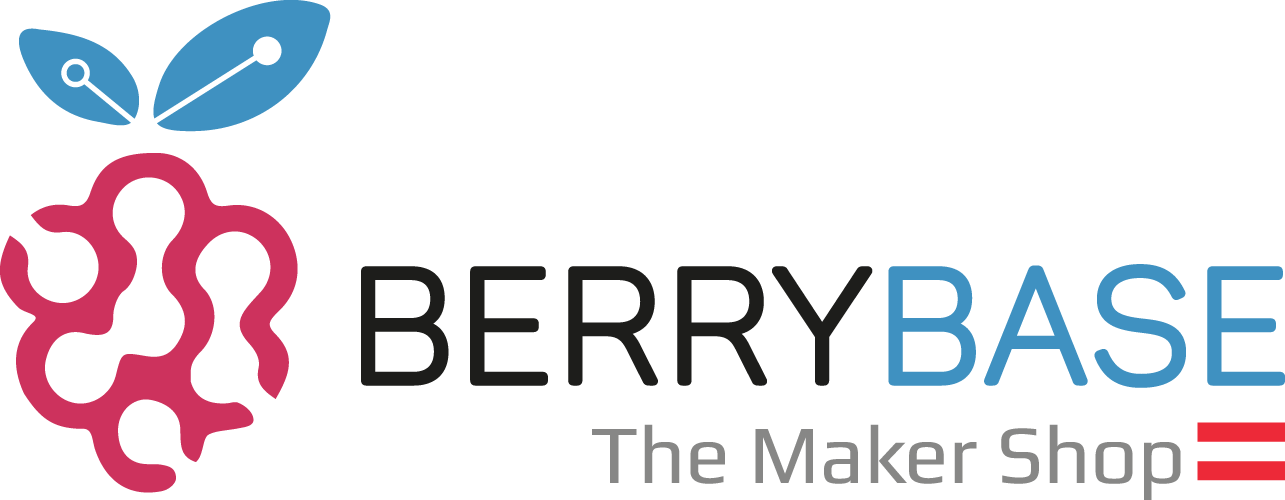No results were found for the filter!
Article no.: GY-BME280
Article no.: GY-BMP280
Wir leben auf einem Planeten mit einer Atmosphäre, einem großen Ozean aus gasförmiger Luft, der alles am Leben erhält - und diese Atmosphäre prallt ständig an uns ab und übt Luftdruck auf alles um uns herum aus. Aber wie viel Luft ist in der Atmosphäre, die auf uns drückt?
Dieser Absolutdrucksensor,ST LPS25HBkann diesen Luftdruck schnell und einfach messen, was nützlich ist, wenn Sie etwas über das Wetter wissen wollen (befinden wir uns in einem Tiefdruck- oder Hochdrucksystem?) oder um die Höhe zu bestimmen, da die Luft dünner wird, je höher wir über den Meeresspiegel kommen. Auf Meereshöhe...
Dieser Absolutdrucksensor,ST LPS25HBkann diesen Luftdruck schnell und einfach messen, was nützlich ist, wenn Sie etwas über das Wetter wissen wollen (befinden wir uns in einem Tiefdruck- oder Hochdrucksystem?) oder um die Höhe zu bestimmen, da die Luft dünner wird, je höher wir über den Meeresspiegel kommen. Auf Meereshöhe...
Article no.: ADA4530
Dieser eTape Flüssigkeitsstandssensor ist ein Festkörpersensor mit einem Widerstandsausgang, der mit dem Flüssigkeitsstand variiert. Er macht Schluss mit klobigen mechanischen Schwimmern und lässt sich leicht mit elektronischen Steuerungssystemen verbinden. Was ihn von unserem anderen eTape-Flüssigkeitssensor unterscheidet, ist der harte Kunststoffmantel, der ihn weniger anfällig für Beschädigungen macht.
Article no.: ADA2656
Article no.: SE-101020193
SALE
Der eTape-Flüssigkeitsstandssensor ist ein Festkörpersensor mit einem Widerstandsausgang, der sich mit dem Flüssigkeitsstand ändert. Er macht klobige mechanische Schwimmer überflüssig und lässt sich leicht mit elektronischen Steuersystemen verbinden. Die Umhüllung des eTape-Sensors wird durch den hydrostatischen Druck der Flüssigkeit, in die er eingetaucht ist, zusammengedrückt. Dies führt zu einer Änderung des Widerstands, die dem Abstand zwischen der Oberseite des Sensors und der Oberfläche der Flüssigkeit entspricht. Der Ausgangswiderstand des Sensors ist umgekehrt proportional zur Höhe der Flüssigkeit: je...
Article no.: ADA3827
Article no.: SE-101020812
Manchmal müssen Sie den Druck in einer feuchten Umgebung messen. Und manchmal müssen Sie sowohl die relativen Druckänderungen als auch den Absolutdruck kennen. Für die Zeiten, in denen Sie beides (oder eines davon) benötigen, ist der LPS35HW der richtige Drucksensor für Sie. Dieser Sensor kombiniert den Schutz vor eindringendem Wasser mit der Unterstützung von hochpräzisen relativen und absoluten Messungen und erfüllt damit alle Ihre Anforderungen. Mit Treibern für CircuitPython, Arduino und Raspberry Pi und Unterstützung für I2C oder SPI (Arduino unterstützt vorerst nur SPI) werden Sie im Handumdrehen Druck in feuchten...
Article no.: ADA4258
Der Umweltsensor BME680 von SparkFun ist ein Breakout, das einen Gassensor mit Temperatur-, Feuchte- und Luftdruckmessung zu einem kompletten Umweltsensor in einem einzigen Gehäuse kombiniert. Der Gassensor des BME680 kann eine Vielzahl von flüchtigen organischen Verbindungen (oder kurz VOC) erkennen, um die Luftqualität in Innenräumen zu überwachen. Kombiniert mit präziser Temperatur, Luftfeuchtigkeit und barometrischem Druck kann der BME680 als komplett eigenständiger Umweltsensor arbeiten, und das alles in einem 1 Zoll x 1 Zoll großen Breakout!
Article no.: SEN-16466
Wir führen einige barometrische Drucksensoren, die sich hervorragend für Höhen- und Wettermessungen eignen. Dieser Drucksensor ist besonders, weil er mit einem Metallanschluss ausgestattet ist! Im Gegensatz zu anderen Drucksensoren können Sie einfach ein Rohr daran befestigen, um den Luftdruck in einem engen Raum zu messen. Wir sind der Meinung, dass sich dieser Sensor hervorragend für die Herstellung von "Sip & Puff"-Schnittstellen für Hilfsmittel oder zur Messung des Drucks in einer Vakuumkammer oder einem anderen Druckbehälter eignet.
Article no.: ADA3965
Article no.: SE-101020192
Article no.: GY-86
Dieser kapazitive Flüssigkeitsstandssensor mit hoher Empfindlichkeit ist für nicht-metallische Rohre mit einem Durchmesser von 6 mm geeignet. Der Sensor gibt den Füllstand digital aus (niedrig, wenn Flüssigkeit erkannt wird) und verfügt über einen 3-poligen DuPont-Stecker, Der Sensor kann in Getränkemaschinen, kleinen Wasserschläuchen und Infusionsleitungen eingesetzt werden.
Article no.: SEN0509
Bosch ist führend bei Luftdrucksensoren - jetzt haben wir die nächste Generation, den Adafruit BMP388 Präzisions-Luftdrucksensor. Wie nicht anders zu erwarten, ist dieser Sensor den früheren Versionen ähnlich, abernoch besser. Der BMP388 hat eine bessere Präzision als je zuvor, was ihn hervorragend für Umweltsensorik oder alsPräzisionshöhenmessermacht. Er kann sogar sowohl in I2C- als auch in SPI-Konfigurationen verwendet werden.
Article no.: ADA3966
Das MPL115A1 ist ein digitales Barometer, das auf einem Breakout-Board montiert ist. Es nutzt MEMs-Technologie, um genaue Druckmessungen zwischen 50kPa und 115kPa zu liefern. Wir führen die SPI-Interface-Version des Sensors. Die durchschnittliche Stromaufnahme beträgt 10µA bei einer Messung pro Sekunde.
Article no.: SEN-09721
Ein wirklich schöner Umweltsensor, der ideal für die Überwachung von Temperatur, Druck und Luftfeuchtigkeit in Innenräumen oder sogar im Freien in einem geeigneten Gehäuse ist. Er ist Raspberry Pi und Arduino-kompatibel. Wir verwenden diesen Sensor auf unserem Enviro+ Umweltüberwachungsboard, aber es ist ein so schöner Sensor, dass wir dachten, wir packen ihn auf ein Breakout! Der BME280 ist ein großartiger Sensor für die Überwachung der Bedingungen rund um Ihr Zuhause.
Article no.: PIM472
Das hochmoderne BME680-Breakout ermöglicht die Messung von Temperatur, Druck, Luftfeuchtigkeit und Raumluftqualität und ist mit Raspberry Pi und Arduino kompatibel! Verwenden Sie dieses Breakout, um jeden Aspekt Ihrer Innenraumumgebung zu überwachen. Seine Gaswiderstandsmesswerte reagieren auf Veränderungen der flüchtigen organischen Verbindungen und können mit den Luftfeuchtigkeitsmesswerten kombiniert werden, um ein Maß für die Raumluftqualität zu erhalten.
Article no.: PIM357
Dieser kleine berührungslose 5-V-Füllstandssensor mit Gravity-schnittstelle kann den Füllstand von 0-100 °C in nichtmetallischen Behältern in einem Messbereich von 3 mm erfassen. Der Sensor verfügt über einen digitalen Mengenausgang (low) und kann direkt mit dem Arduino UNO verwendet werden, um den Flüssigkeitsstand in einem Wassertank, einer Getränkemaschine, einer Wasserleitung, einem Reagenzglas usw. zu messen.
Article no.: SEN0485
Das SparkFun BME280 Atmosphärensensor-Breakout ist der einfache Weg, um Luftdruck, Luftfeuchtigkeit und Temperatur zu messen, ohne dabei zu viel Platz zu beanspruchen. Im Grunde können Sie alles, was Sie über die atmosphärischen Bedingungen wissen müssen, mit diesem winzigen Breakout herausfinden. Der BME280 Breakout wurde für den Einsatz in der Innen-/Außennavigation, der Wettervorhersage, der Heimautomatisierung und sogar der persönlichen Gesundheits- und Wellness-Überwachung entwickelt.
Article no.: SEN-13676
Dieser Drucksensor von Freescale ist eine großartige, kostengünstige Sensorlösung für die Präzisionsmessung des barometrischen Drucks und der Höhe. Der MPL3115A2 hat eine typische Auflösung von 1,5 Pascal, die die Höhe auf 0,3 Meter auflösen kann (im Vergleich zum BMP180, der 0,17m schafft). Es hat einige Vorteile gegenüber dem BMP280, wie z.B. Interrupt-Ausgänge für extrem niedrigen Stromverbrauch, und es ist auch viel einfacher, die Höhe mit einer eingebauten Höhenberechnung abzulesen - kein Ablesen und Berechnen der Kalibrierung erforderlich. Als Bonus gibt es sogar einen ziemlich guten Temperatursensor mit...
Article no.: ADA1893
Der SparkFun Qwiic Drucksensor enthält den Drucksensor BMP384 von Bosch Sensortec. Der BMP384 zeichnet sich durch hochauflösende Messungen (bis zu 24 Bit) aus und verwendet einen mit Gel gefüllten Hohlraum, der zusätzlichen Widerstand gegen Flüssigkeiten (Wasser und andere Chemikalien) bietet. Das macht ihn zu einer großartigen Option für die Drucküberwachung in der Nähe von Wasser oder in feuchten Umgebungen, obwohl der Sensor ohne ein entsprechendes Integrationskonzept nichtwasserdicht ist.
Article no.: SEN-19662
Der SparkFun Qwiic MicroPressure Sensor ist ein Miniatur-Breakout, das mit Honeywells 25psi piezoresistivem Silizium-Drucksensor ausgestattet ist. Dieser MicroPressure Sensor bietet einen kalibrierten und kompensierten Druckmessbereich von 60mbar bis 2,5bar, einen leicht ablesbaren 24-Bit-Digital-I2C-Ausgang und kann über einen bestimmten Temperaturbereich für Sensor-Offset, Empfindlichkeit, Temperatureffekte und Nichtlinearität mit Hilfe eines On-Board Application Specific Integrated Circuit (ASIC) kalibriert und kompensiert werden. Mit seinem extrem niedrigen Stromverbrauch und den Qwiic-Anschlüssen haben Sie einen leistungsstarken kleinen Sensor!
Article no.: SEN-16476
Dies ist das MS5803-14BA Drucksensor-Breakout, ein hochauflösender Drucksensor mit einer I2C- und SPI-Schnittstelle. Dieser MEMS-Drucksensor misst den absoluten Druck der ihn umgebenden Flüssigkeit, zu der Luft, Wasser und alles andere gehört, das sich wie eine viskose Flüssigkeit verhält. Je nachdem, wie Sie die Daten interpretieren, können Sie die Höhe, Wassertiefe oder andere Aufgaben bestimmen, die eine genaue Druckmessung erfordern. Was den MS5803-14BA einzigartig macht, ist die Gelmembran und die antimagnetische Edelstahlkappe, die vor 30 bar Wasserdruck schützt.
Article no.: SEN-12909
Mit dem SparkFun BME280 Atmospheric Sensor Breakout mit Headern kannst du ganz einfach Luftdruck, Luftfeuchtigkeit und Temperatur messen, ohne viel Platz zu benötigen. Im Grunde kannst du alles, was du über die atmosphärischen Bedingungen wissen musst, mit diesem kleinen Breakout herausfinden. Der BME280 Breakout wurde für die Innen- und Außennavigation, die Wettervorhersage, die Heimautomatisierung und sogar für die Überwachung der persönlichen Gesundheit und des Wohlbefindens entwickelt.
Article no.: SEN-13905
A multiple function sensor that can measure temperature, pressure, humidity, and gas at the same time. Based on the BME680 module. It integrates the 4-in-1 function on such a small module and will be very beneficial to apply on GPS devices or IoT projects such as your own Arduino weather station or weather forecast system.
Article no.: SE-101020513
Druck-, Temperatur- und Feuchtesensoren (PHT-Sensoren) werden aufgrund ihrer vielfältigen Einsatzmöglichkeiten häufig von Halbleiterherstellern angeboten. Der MS8607 PHT-Sensor von TE Connectivity leistet bewundernswerte Arbeit bei der Messung eines breiten Bereichs aller drei Umgebungsbedingungen. Jeder einzelne MS8607-Sensor wird im Werk kalibriert und die Kalibrierungskonstanten im Sensor selbst gespeichert. Dieser Sensor ist ein One-Stop-Shop für alle gängigen Wetter- und Umweltmesswerte.
Article no.: ADA4716
Der eTape-Füllstandssensor ist ein Festkörpersensor mit einem Widerstandsausgang, der mit dem Flüssigkeitsstand variiert. Er macht klobige mechanische Schwimmer überflüssig und lässt sich leicht mit elektronischen Steuerungssystemen verbinden. Die Umhüllung des eTape-Sensors wird durch den hydrostatischen Druck der Flüssigkeit, in die er eingetaucht ist, zusammengedrückt. Dies führt zu einer Widerstandsänderung, die dem Abstand von der Oberseite des Sensors zur Oberfläche der Flüssigkeit entspricht. Der Widerstandsausgang des Sensors ist umgekehrt proportional zur Höhe der Flüssigkeit: je niedriger der...
Article no.: ADA463
Article no.: ADA2652
Das SparkFun BME280 Atmosphärensensor-Breakout ist eine einfache Möglichkeit, Luftdruck, Luftfeuchtigkeit und Temperatur zu messen, ohne dabei zu viel Platz zu beanspruchen. Im Grunde können Sie mit diesem winzigen Breakout alles herausfinden, was Sie über atmosphärische Bedingungen wissen müssen. Der BME280 Breakout wurde für den Einsatz in der Innen-/Außennavigation, der Wettervorhersage, der Heimautomatisierung und sogar für die Überwachung der persönlichen Gesundheit und des Wohlbefindens entwickelt.
Article no.: SEN-15440
Der MPL3115A2 ist ein MEMS-Drucksensor, der Höhendaten mit einer Genauigkeit von 30 cm liefert (bei aktiviertem Oversampling). Die Sensorausgänge werden von einem hochauflösenden 24-Bit-ADC digitalisiert und über I2C übertragen, was bedeutet, dass er sich leicht mit den meisten Steuerungen verbinden lässt. Die Druckausgabe kann in Bruchteilen von Pascal aufgelöst werden, und die Höhe kann in Bruchteilen von Metern aufgelöst werden. Das Gerät bietet auch 12-Bit-Temperaturmessungen in Grad Celsius.
Article no.: SEN-11084
Das SparkFun Qwiic LPS28DFW Micro Absolute Digital Barometer bietet ein einzigartiges Barometer-Breakout mit dem LPS28DFW von STMicroelectronics im Qwiic Micro-Formfaktor. Der LPS28DFW ist ein absolutes Barometer mit einem wasserfesten Gehäuse, das sich perfekt für Druckmessanwendungen eignet, bei denen der Sensor mit Wasser in Berührung kommt oder sogar in Wasser getaucht wird. Das Qwiic-System ermöglicht die Integration in dein I2C-System, ohne dass Lötarbeiten erforderlich sind. Die Micro-Größe erlaubt zwar keine traditionelle PTH-Stiftleiste mit 0,1"-Abstand für die Kommunikation, aber die Platine führt einen Interrupt- und einen Masse-Pin...
Article no.: SEN-21222
NEW
Das SparkFun micro:climate Kit für micro:bit v3.0 ist ein umfassendes Wetterstation-Kit, das Qwiic-fähig ist und Wetterinstrumente sowie einen Bodenfeuchtigkeitssensor umfasst. Ideal für Landwirte, Meteorologen und Hobbyisten, erfordert es kein Löten und ermöglicht die Wetterüberwachung über drahtlose Kommunikation.
Article no.: KIT-16274
Article no.: ADA3660
Ein ultrapräziser Luftdruck- und Temperatursensor, montiert auf einem Breakout Garden/Qwiic/STEMMA QT kompatiblen I2C-Breakout.
Der ICP-10125 Sensor nutzt die kapazitive MEMS-Technologie - das ist eine flexible Membran über einer mit leitenden Schichten ausgekleideten Kammer, die als Kondensator wirkt. Das ermöglicht eine hochpräzise und stromsparende Messung des Luftdrucks mit einer Genauigkeit von 1 Pa.
Der ICP-10125 Sensor nutzt die kapazitive MEMS-Technologie - das ist eine flexible Membran über einer mit leitenden Schichten ausgekleideten Kammer, die als Kondensator wirkt. Das ermöglicht eine hochpräzise und stromsparende Messung des Luftdrucks mit einer Genauigkeit von 1 Pa.
Article no.: PIM586
Article no.: SE-110020248
Der SparkFun Qwiic BMP581 Drucksensor ist ein absoluter Drucksensor in Standardgröße (1 Zoll x 1 Zoll) von Bosch Sensortec. Der BMP581 zeichnet sich durch eine außergewöhnliche Auflösung (bis zu 1/64Pa) und Genauigkeit aus, während die Linearisierung und Temperaturkompensation auf dem Chip beibehalten wird, um echte absolute Daten für Druck und Temperatur zu liefern. Der Qwiic Drucksensor kommuniziert standardmäßig über I2C und nutzt unser praktisches Qwiic Connect System, so dass keine Lötarbeiten erforderlich sind, um ihn mit dem Rest Ihrer Platinen zu verbinden. Dennoch haben wir die I2C-Signale an eine Reihe von...
Article no.: SEN-20170
Viewed



















































